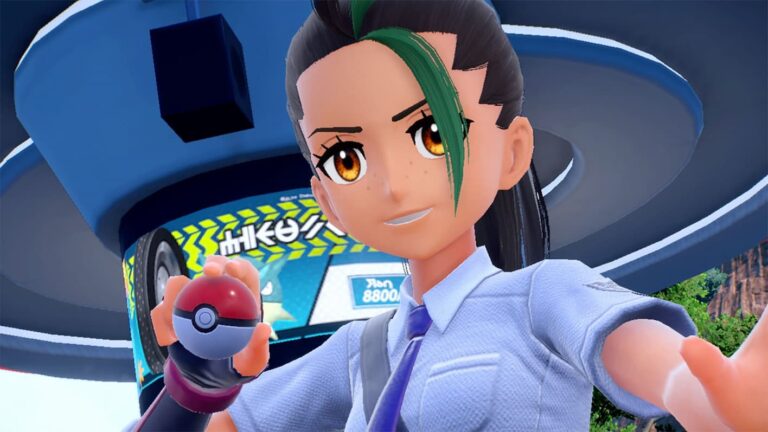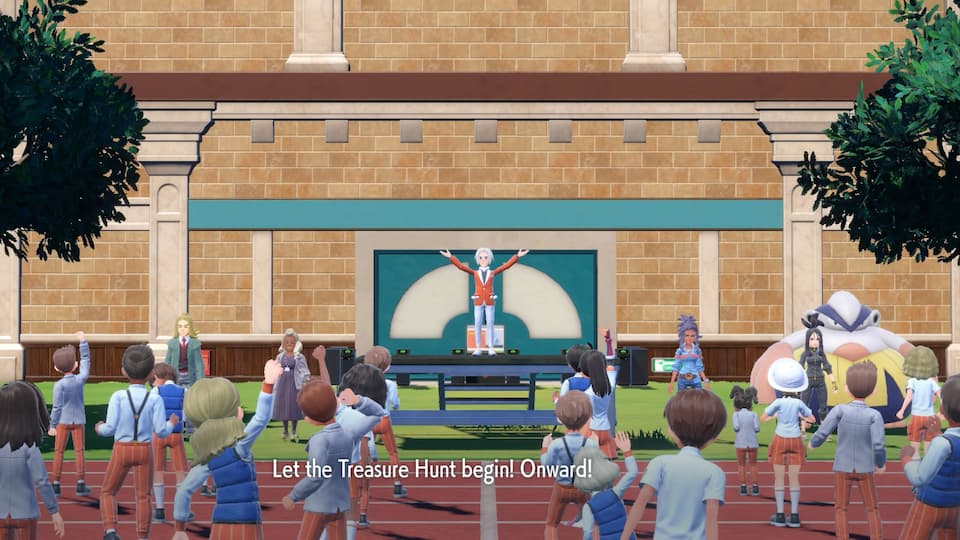The 9th generation of Pokémon core series video games, Pokémon Scarlet and Pokémon Violet, have been out for just about two weeks with incredibly mixed reviews. As the latest additions, the most intuitive point(s) of comparison for these games’ qualities are the many core series titles that came before them. In this case, “core series” refers to any of the video games that follow the standard format of a player receiving a Pokémon and journeying through one of the series’ many regions. Eventually, they fight their way through a series of challenges or trials (usually gym challenges) to defeat a great evil, be acknowledged as the strongest trainer, or both. Along the way, the player is accompanied and loosely followed by a variety of non-playable characters that serve as allies and/or rivals to the player character.
This is the aspect of the newest generation that I specifically want to call attention to. Much of the mixed reviews for Pokémon Scarlet and Violet have to do with mechanical qualities; the game has a substantial number of issues with framerate, general performance, and consistent crashing. The positives get overshadowed by how meme-worthy a lot of that is. These new games have a strong trio of story arcs with their own non-overlapping characters and compelling progressions. Nemona, as the rival character, follows the player character as they challenge the Paldea region’s gyms and progress toward becoming a Champion. Unlike other rivals in the past, who typically start as a fledgling trainer alongside the player, Nemona is already a champion from the very start. This was what made her immediately interesting to me, especially since the vast majority of the games’ recent rivals have been incredibly disappointing.
What Makes a Good Rival
There are many aspects to a rival that one might say makes them “good” but I think three are worth paying particular attention to. First is personality, or the way the rival character talks and acts. This affects not only gameplay but also the feel of the story and dialogue with the player. Second is origin, or who the character is and how they wound up being in a position to frequently battle the player character in the first place. Last, and often most noticeable, is the rival’s aptitude and relative power in battle. The third aspect is one that has changed pretty starkly since the 6th generation of Pokémon games. In older games, when the player character made their quintessential choice between a fire, water, or grass type starter, the (main) rival character picked the starter strong against the player starter’s type. This created an inherent challenge from the very beginning of the game; without getting additional pokémon or raising your first one you were almost guaranteed to lose against your rival in battles you were forced to have against them. From generation 6 onward rivals began flipping the script and picking the starter weak to yours. They also tend to give you the chance to prepare before battles.
This means many of the later rivals, backstory notwithstanding, feel shallow. In earlier games, like Ruby, Sapphire, and Emerald back in generation 3, the rival picks a stronger starter. But, they never even fully evolve it (though this is rectified in the remakes) and have practically no backstory or interesting dialogue. Arguably the best rivals the game has ever seen have mostly been its oldest ones. Blue, the Pokémon core series’ first rival, is full of personality (an asshole one, in fairness) and is merciless toward the player till the very end of the game. Silver from the second generation takes Blue’s jerky attitude and switches it to just being…evil. N, from Pokémon Black and White (generation 5), is in my opinion the best rival in strict terms of backstory and personality, but neither of those traits bolster his otherwise meh battle interactions with the player. Blue and Silver, while strong in terms of raw personality and battle prowess, are somewhat lacking in terms of compelling backstory. Silver gained some points here after it was revealed he is the son of:
Click here to see a spoiler
Team Rocket boss Giovanni.
But his origin and backstory are only revealed in a combination of special game events and dialogue across multiple games. Even then, the English translation of that dialogue has no mention of his parentage.
How Nemona Outdoes the Rest
Nemona is unique from every other rival. Unlike even the best rivals before her, she is strong across all of the categories I indicated above. Even more, her particular traits across those categories are mutually reinforcing. Her backstory makes her personality refreshing. Her personality adds context and weight to her battle prowess. In battle, she uses a strong team that eventually boasts some of the highest levels across all of the rivals in their respective main (pre-credits) storylines. Because Nemona starts off as a champion ranked trainer however, she explicitly is catching and selecting pokémon suitable for the player’s progress in the game. For the first time, if she is ever weaker than you it makes perfect sense. Rather than a rival losing to you after training for roughly the same time as you, Nemona losing to you is part of a grand plan to raise you into a trainer who can actually beat her at her best. Her picking a starter weak to yours is a lesson in type advantages.
Nemona’s love for battle is almost infectious and only mitigated by Pokémon Scarlet and Violet’s disappointing lack of voice acting within cutscenes. The joy she feels toward your progress is incredible palpable; other characters have to tell her to calm down and refrain from challenging you at every available opportunity. As the child of an important board member for the Rotom Phone (the device effectively functioning as the player’s start menu in generations 8 and 9) Nemona by all rights should come off like a billionaire’s kid. Instead, she shows absolutely no sign of a super privileged background. It’s by no means new for a rival’s character arc to involve a lived rejection or overcoming of their lineage (Silver, Hau, and Hop for example). But Nemona takes that a step further: the game begins with her already having become the youngest champion ever and completing that arc.
We get to learn about an unbelievably powerful trainer who achieved her dreams and found that they were hollow, only to find an opportunity to guide someone worthy enough to make her experience genuine excitement in battle. By virtue of playing the game and doing the same gym battles Nemona did, we as players gain a tacit understanding of the existing parts of her story. Then, we continuously battle her until we face her at full strength and become the catalyst for her story to move forward again. It might not be as grandiose an arc as someone like N. But, that might be just why it’s so compelling.
A New Bar for Pokémon Game Characters
Pokémon Scarlet and Violet may have dropped the ball in terms of performance and graphics (please, please upgrade the PlayStation 2 trees). But in terms of story and rivals they brought back of level of quality that hasn’t been around since Pokémon Black and White. I think I’m not alone in saying her expressive cutscenes and boisterous personality are begging for voice acting. That just goes to show fans enjoyed her character so much their reaction was to demand more rather than criticize what they received. Hopefully, future games (or even DLC for this generation) give us just that.
Images from the Pokémon Official Website and Pokémon Masters Official Website
©2022 Pokémon. ©1995-2022 Nintendo/Creatures Inc./GAME FREAK inc. @2020 DeNA Co., Ltd.



Participate In Discussions